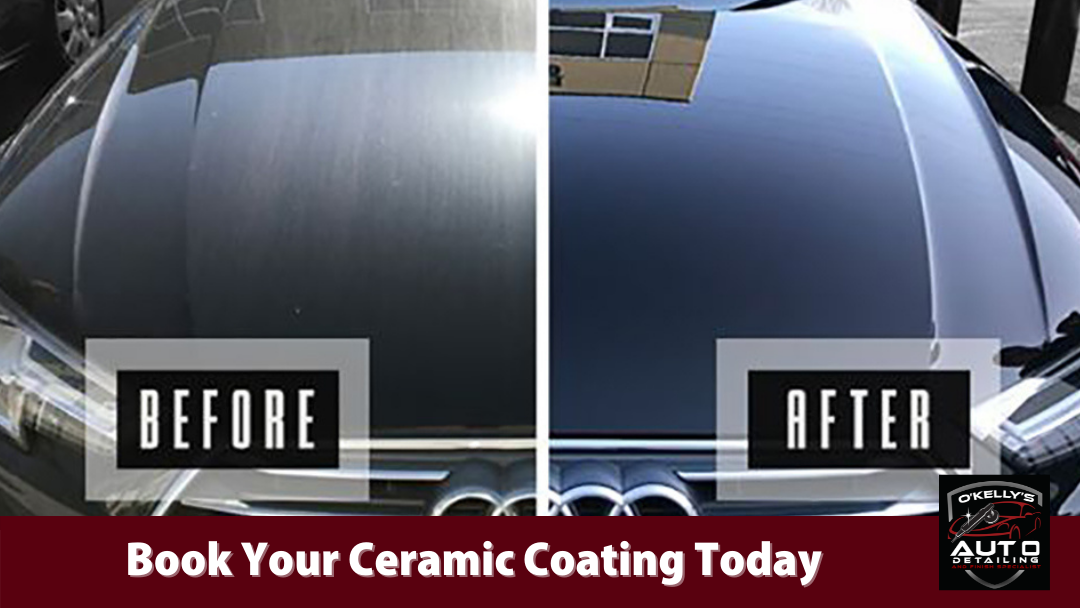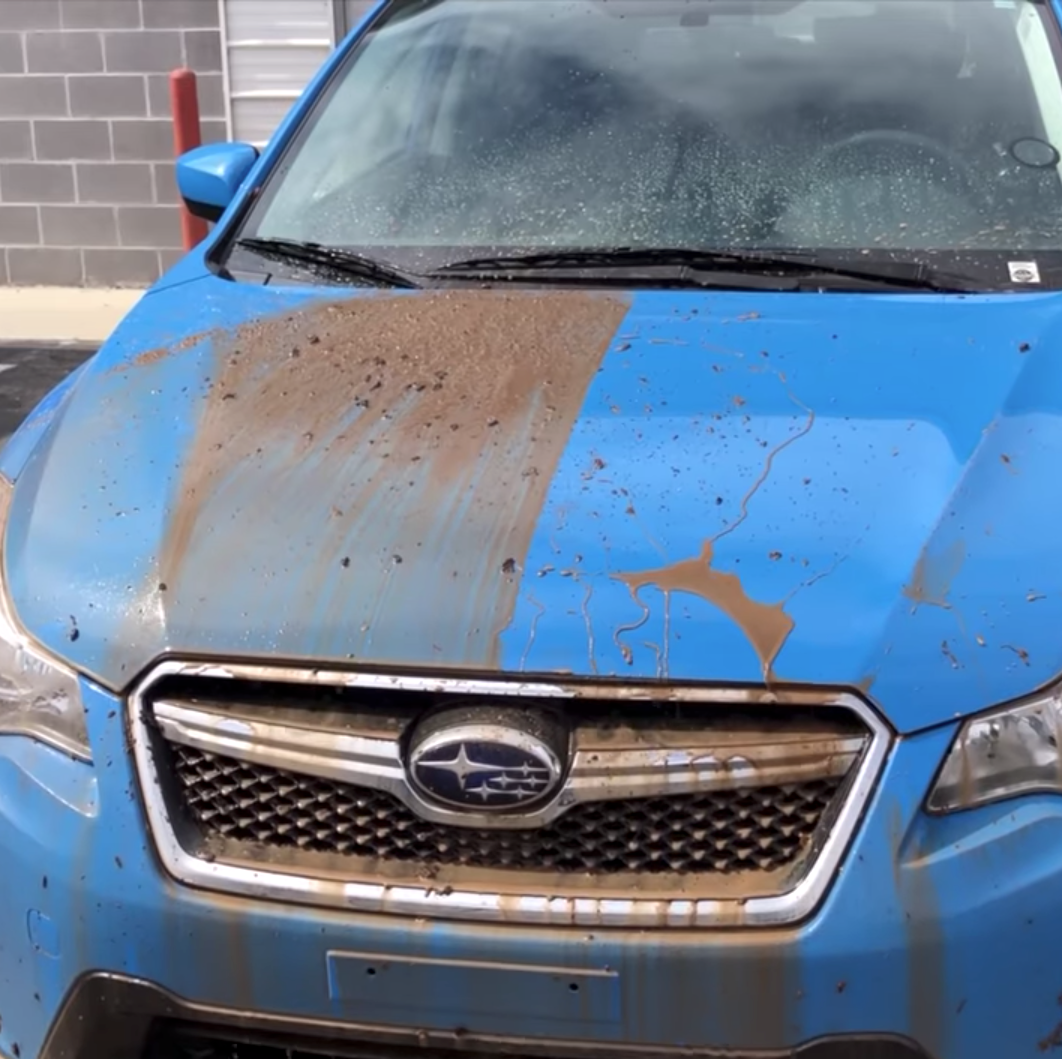Ceramic Coating for Cars: The Ultimate Solution for a Glossy Finish
Ceramic Coating for Cars: The Ultimate Solution for a Glossy Finish
Blog Article
Ceramic Finishing vs. Traditional Wax: Which Offers Much Better Long-Term Protection?
The debate in between ceramic coatings and typical wax for vehicle defense has actually garnered considerable interest among vehicle fanatics and professionals alike. Ceramic layers flaunt remarkable durability and resistance to environmental variables, yet the complexity of their application increases concerns concerning accessibility and practicality.
Overview of Ceramic Coating
Ceramic layer has gained substantial appeal amongst automotive enthusiasts and detailers alike because of its sophisticated safety high qualities. This ingenious modern technology is developed to develop a long lasting, hydrophobic guard over a vehicle's paint surface, considerably enhancing its resistance to environmental pollutants such as dust, UV rays, and chemical stains. Unlike traditional wax, which gives a short-term layer of defense, ceramic finishes bond at a molecular level with the paint, supplying long-lasting longevity-- typically expanding beyond 2 years with correct maintenance.
The application procedure involves careful prep work of the vehicle's surface, consisting of cleansing and polishing to guarantee ideal adhesion. Once applied, the finish treatments to create a robust layer that not only adds depth and gloss to the paint however likewise streamlines upkeep. With its hydrophobic homes, ceramic coating enables water and dust to move off even more conveniently, reducing the frequency of cleans and reducing the danger of swirl marks.
Additionally, ceramic layers are offered in various formulas, permitting individuals to select products tailored to their certain demands and choices. Overall, ceramic covering represents a considerable advancement in paint protection modern technology, supplying remarkable efficiency contrasted to standard alternatives.
Review of Traditional Wax
Traditionally considered a staple in auto treatment, wax acts as a prominent choice for those looking for an uncomplicated method to improve and protect their vehicle's paint - ceramic coating. Automotive wax usually consists of all-natural components, such as carnauba, or synthetic substances, made to develop a protective layer on the surface area of the paint. This layer not only enhances the car's gloss and shine but additionally supplies a barrier against environmental contaminants
The application of wax is usually user-friendly, making it easily accessible for both specialists and DIY enthusiasts. It can be applied by hand or equipment, enabling convenience in the detailing procedure. Once used, wax needs a healing duration, after which it solidifies to form a safety covering. Wax is also known for its capacity to push back water, promoting a beading impact that assists in the prevention of water places and corrosion.
However, while wax is reliable for boosting the visual charm of a lorry, it is essential to note that the security it uses might necessitate a lot more constant reapplication compared to alternative products, such as ceramic layers. In general, standard wax continues to be a popular alternative for those prioritizing convenience of usage and instant visual enhancement.
Durability and Longevity Comparison
While both ceramic finishes and traditional wax offer protective benefits for auto paint, their resilience and longevity differ substantially. Traditional wax, generally made from natural carnauba or synthetic polymers, generally offers a safety layer that lasts about three to six months. This reasonably brief life-span demands normal reapplication to keep optimum security.
In contrast, ceramic finishes are engineered from Home Page advanced nanotechnology, forming a covalent bond with the paint surface area. This causes a durable, hydrophobic layer that can sustain for 2 to five years, depending upon the product and ecological conditions. The exceptional sturdiness of ceramic finishings is credited to their chemical structure, which supplies improved resistance to scratches, UV rays, and oxidation.

Security Against Ecological Elements
Protecting an automobile's paint from environmental aspects is critical for preserving its look and value in time. Cars are constantly exposed to a range of elements, including UV rays, bird droppings, tree sap, acid rainfall, and road crud, all of which can endanger the integrity of the paintwork.
Ceramic coatings supply a durable defense versus these environmental aggressors. Unlike standard wax, which can weaken promptly under UV exposure, ceramic coverings develop a sturdy, hydrophobic layer that stands up to the hazardous effects of sunshine and ecological contaminants. This sophisticated innovation develops a chemical bond with the car's surface, providing premium defense that lasts for years, also in harsh conditions.
Conventional wax, while less complicated to apply, normally calls for constant reapplication and supplies limited resistance to impurities and UV rays. With time, it can damage down, leaving the paint vulnerable to scrapes and oxidation. In comparison, ceramic layers view publisher site maintain their protective qualities much longer, substantially minimizing the danger of paint damage and ensuring that the automobile maintains its visual charm. Because of this, ceramic finishings are significantly identified as the premium choice for long-term security versus ecological variables.
Application and Maintenance Distinctions
The methods of application and succeeding maintenance for ceramic coverings and typical wax differ dramatically, influencing the general customer experience and effectiveness of each item. Ceramic layers call for a more elaborate application procedure, generally including surface prep work that consists of washing, sanitizing, and polishing the lorry. As soon as the surface prepares, the ceramic layer is applied in a regulated environment, typically requiring professional competence to make sure correct curing and bonding to the paint.

While both products enhance vehicle look, the longer-lasting security offered by ceramic finishings may warrant their initial financial investment, in spite of the more requiring application procedure. Conversely, standard wax visit here continues to be a popular option for those looking for a less complex, albeit short-term, solution.

Conclusion
In final thought, ceramic finishes demonstrate substantial advantages over standard wax in terms of longevity and environmental defense. With a lifespan prolonging 2 to five years and exceptional resistance to UV rays, dust, and chemical stains, ceramic coverings supply a much more efficient option for lasting automobile upkeep. The application procedure might require specialist knowledge, the resulting price financial savings and decreased regularity of reapplication highlight the worth of ceramic finishes for those looking for ideal lorry protection.
The dispute in between ceramic finishes and conventional wax for car protection has garnered considerable focus among vehicle lovers and experts alike. Unlike standard wax, which gives a short-term layer of security, ceramic finishings bond at a molecular level with the paint, using long-lasting sturdiness-- typically extending past 2 years with appropriate maintenance.
While both ceramic finishes and traditional wax offer protective benefits for auto paint, their resilience and long life differ considerably. For automobile enthusiasts looking for lasting protection, ceramic finishes present a compelling advantage over standard wax products.
In conclusion, ceramic coatings show considerable advantages over traditional wax in terms of resilience and environmental defense.
Report this page